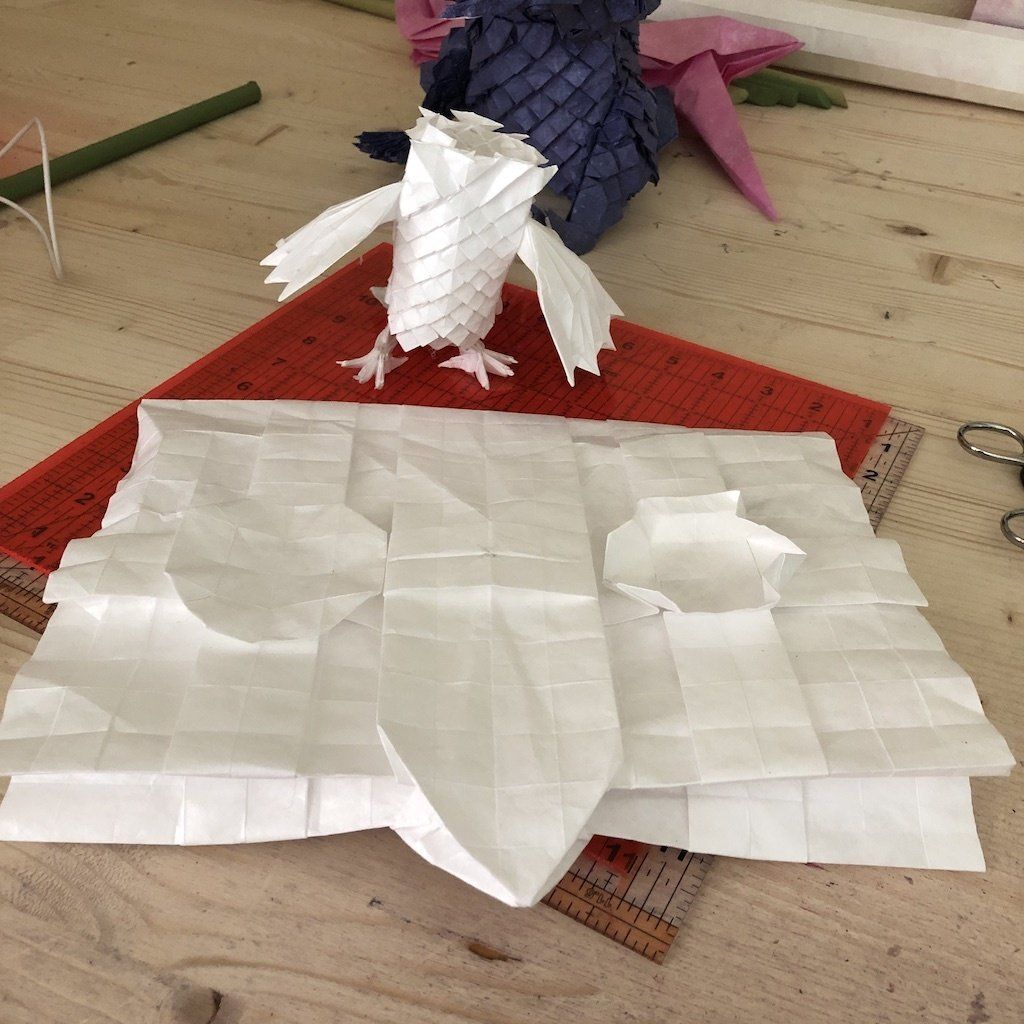BEING AN ORIGAMI DESIGNER
This is a subtitle for your new post

One of the more common questions I am asked is, "How do you even do that?"
I never really planned to become an origami designer/artist. It kind of just happened . . . gradually . . . over several years. My first origami design was an origami corgi dog in 2017. I could mentally see what I wanted, but could not find instructions for it, so I just started fiddling until I figured it out. Through that experience, I learned that it is a completely different use of our brain to DESIGN origami than to follow origami diagrams.
There is no fixed protocol for becoming an origami designer/artist. But there are a few observations and suggestions that I can share based on my own art journey.
Number 1: Fold, Fold, Fold. Between folds, think about what is happening. What is the purpose of that fold or that series of folds you just did? Designing origami uses a completely different part of the brain from following instructions. That being said, you can still learn a lot from what other designers have done. Just don't get so focused on following that you forget to think about the process, and analyze the design as you fold.
Number 2: Try different approaches. Different brains process differently. Robert Lang's, Origami Design Secrets is comprehensive, well-written, excellently diagrammed, and even has tutorials. Understanding the math and geometry behind origami is helpful for understanding how origami works. Some people can then design using just these mathematical concepts and formulas. They can design on computers because they have the innate ability to visualize the transformation from a two dimensional piece of paper to a three dimensional object. I occasionally plot things on grid paper, particularly with box pleating, but more often, I design with my fingertips, and LOTS of trial and error.
Number 3: If you want to be able to reproduce it, record what you're doing as you do it. Admittedly, it can be tedious and disruptive to take notes and photos as you "experiment," especially when it doesn't work out. I have had to reverse engineer my own work to figure out what I did.
Number 4: All traditional origami has a base. Different bases have different numbers of "extremities" and different proportions. A reasonable starting point is to figure out which base best suits your intended model.
Number 5: Box pleating is flexible and fun.
Lesson 6: Sometimes it helps to focus on one section at a time. I've got file folders on feet/claws, wings, faces, scales, etc. Each file folder represents a cumulative study of a particular body part and different ways of folding it off a straight edge, or a corner, or the middle of a paper. The familiarity with different ways of folding and sculpting a particular body part allows me to more efficiently "insert" it into a design.
Lesson 7: Materials matter.
Lesson 8: Like many things, expertise is earned by building, little by little, on what you know.
Keep Folding!